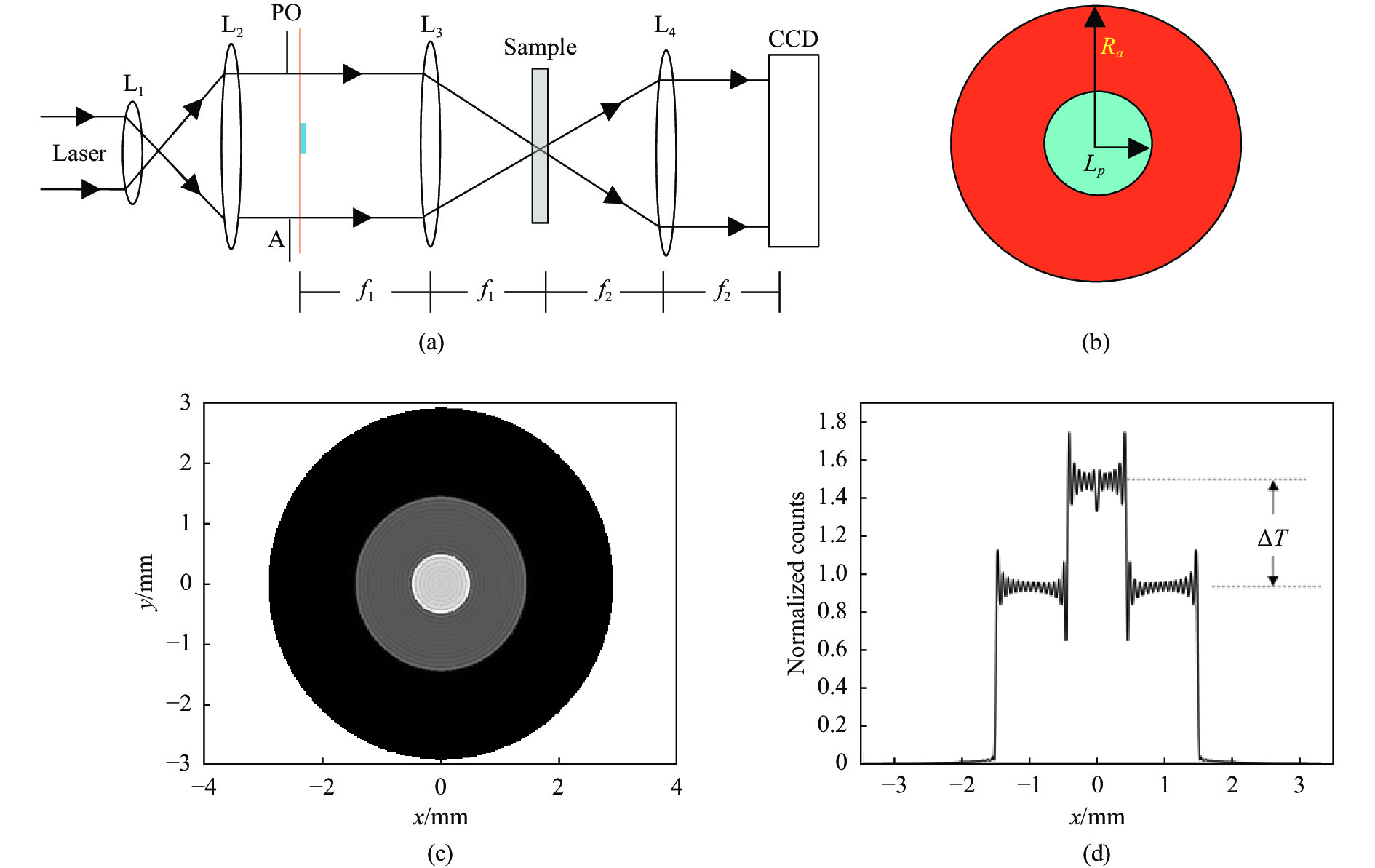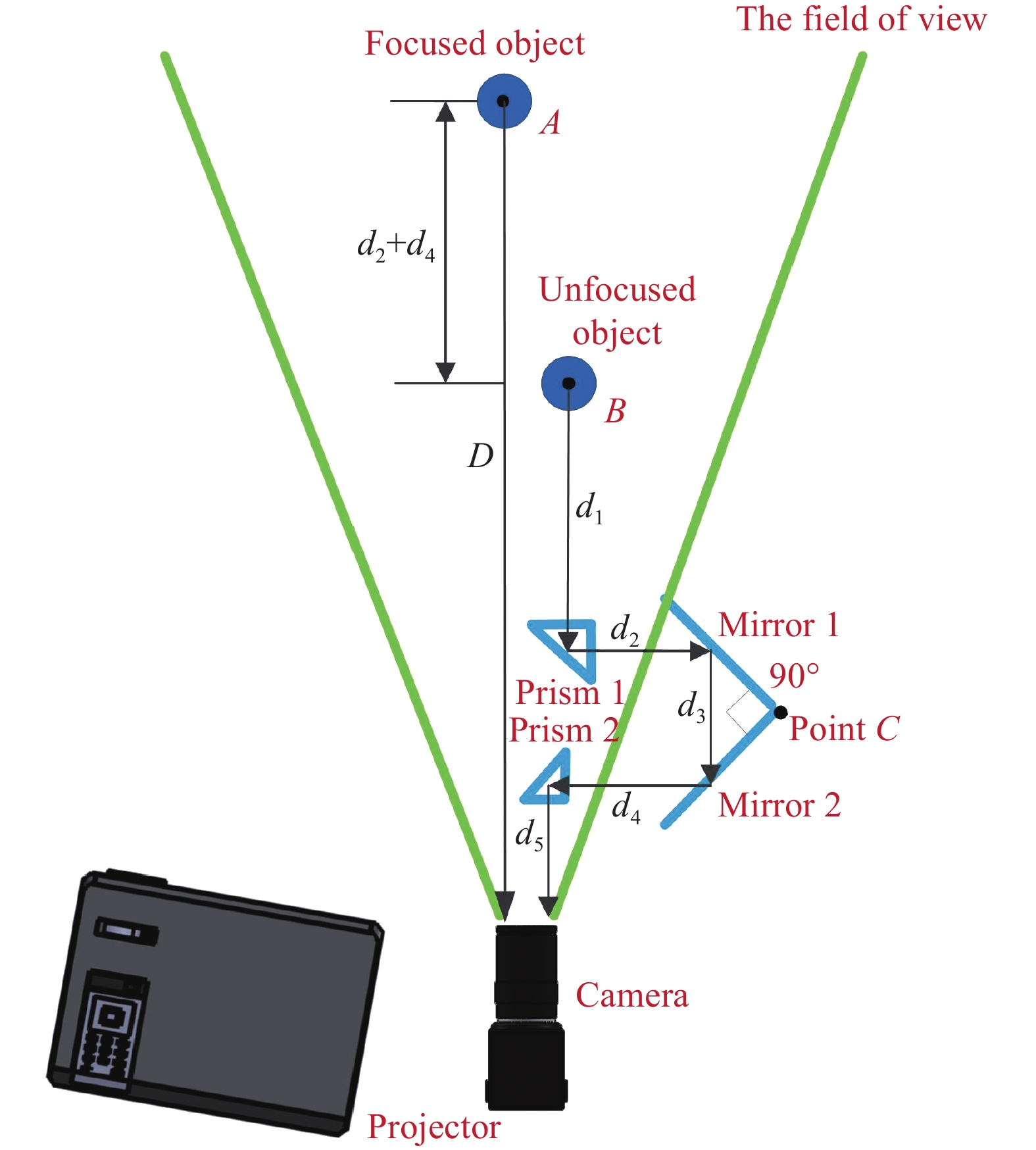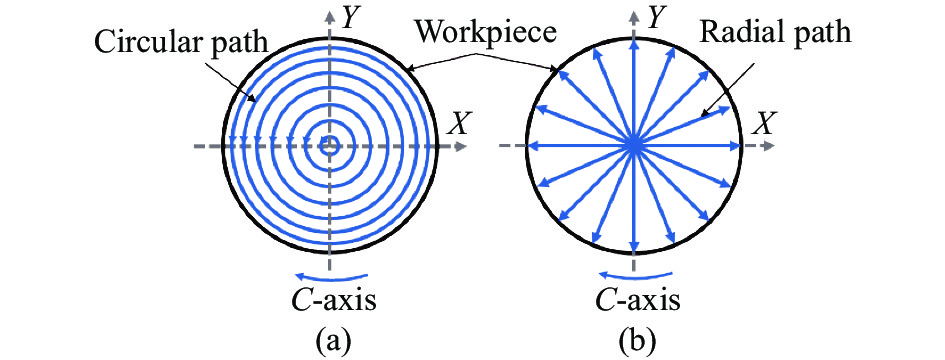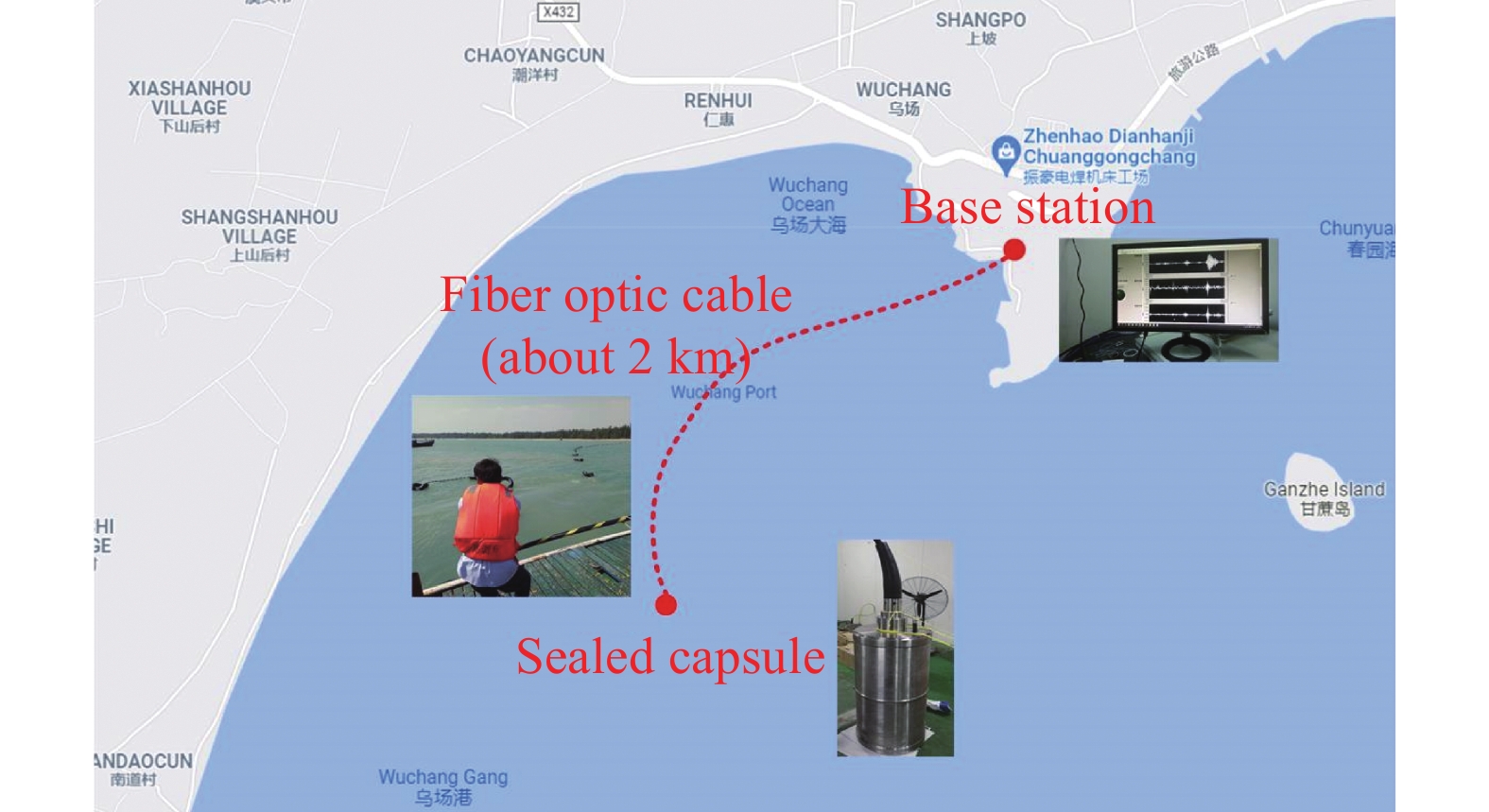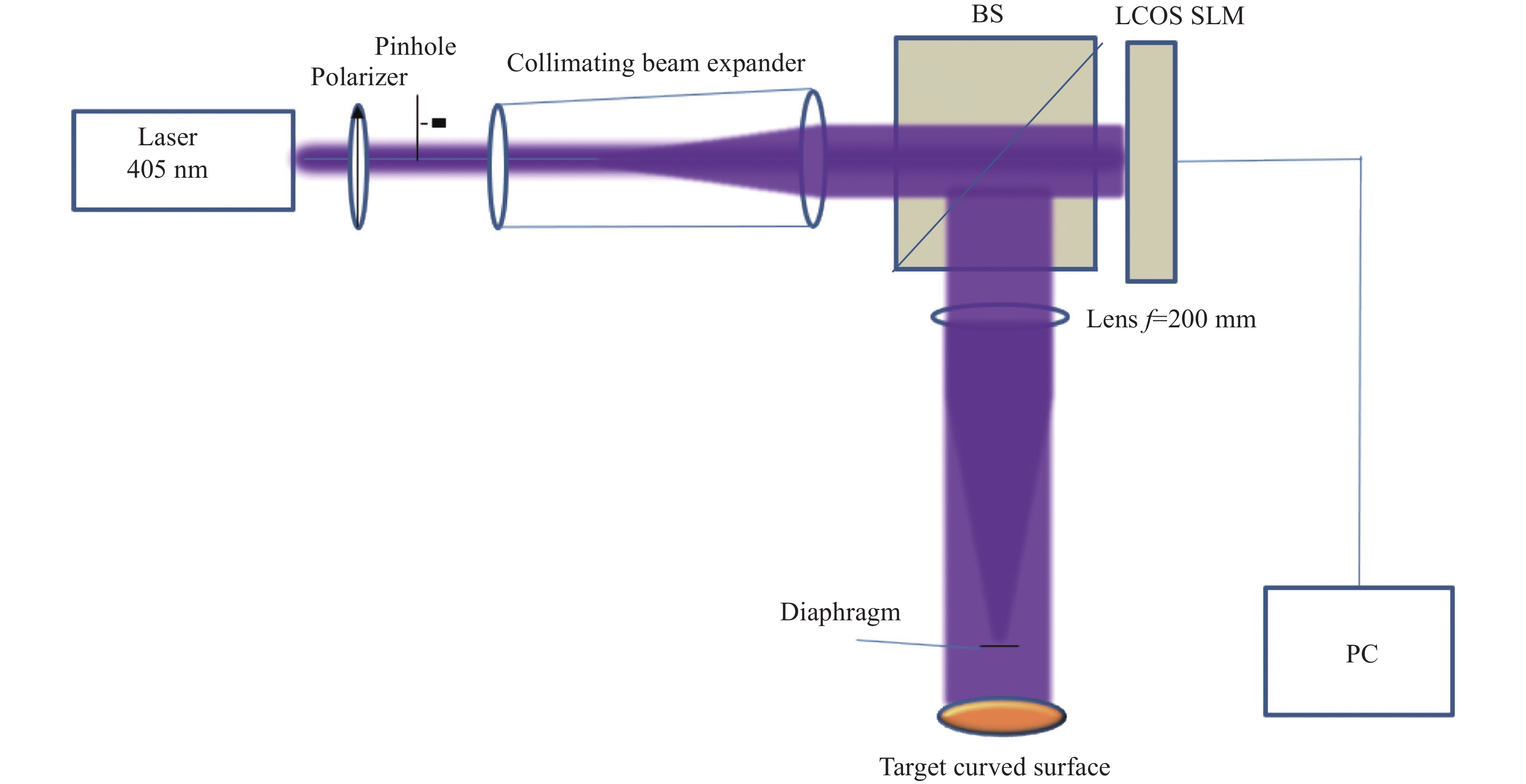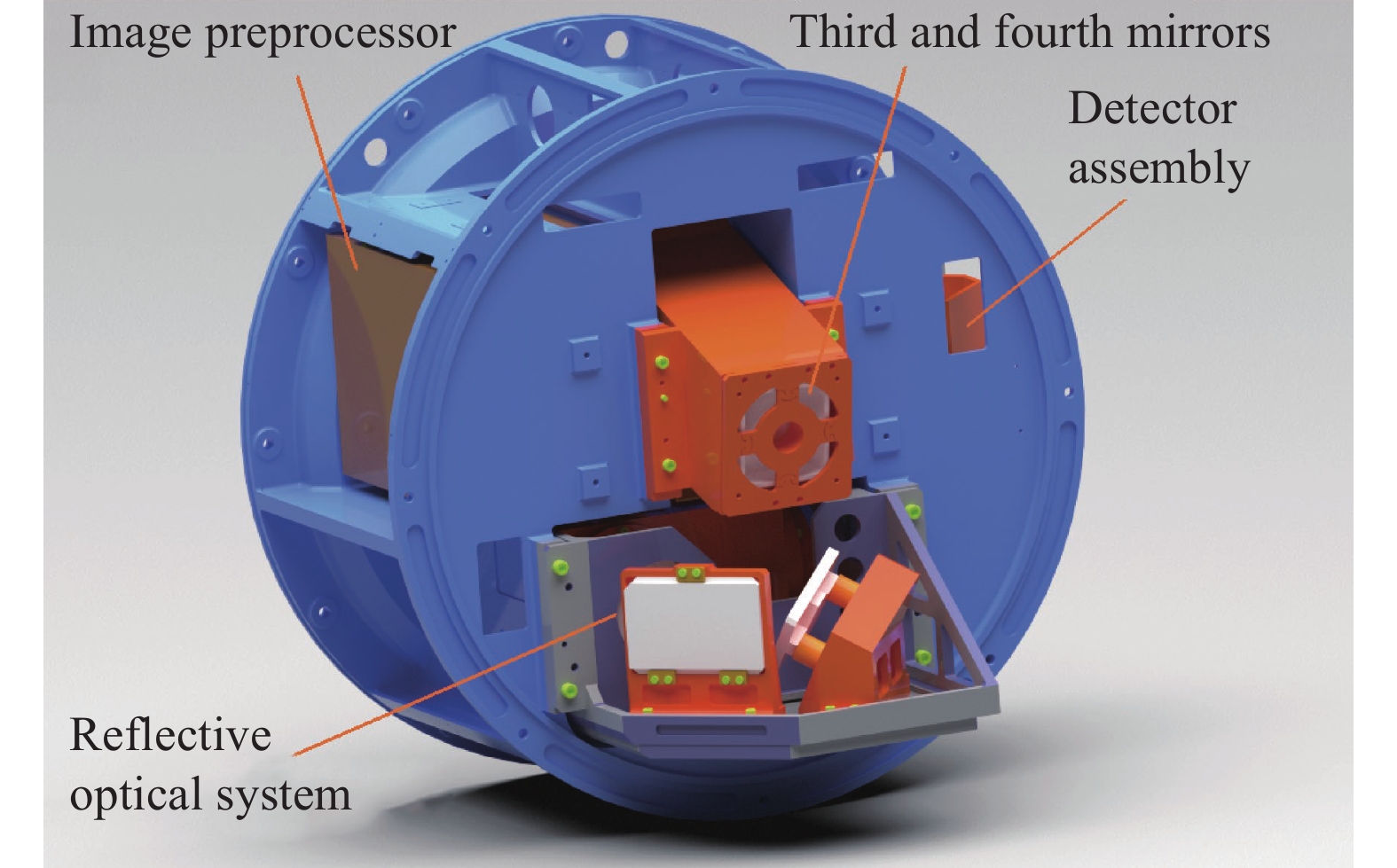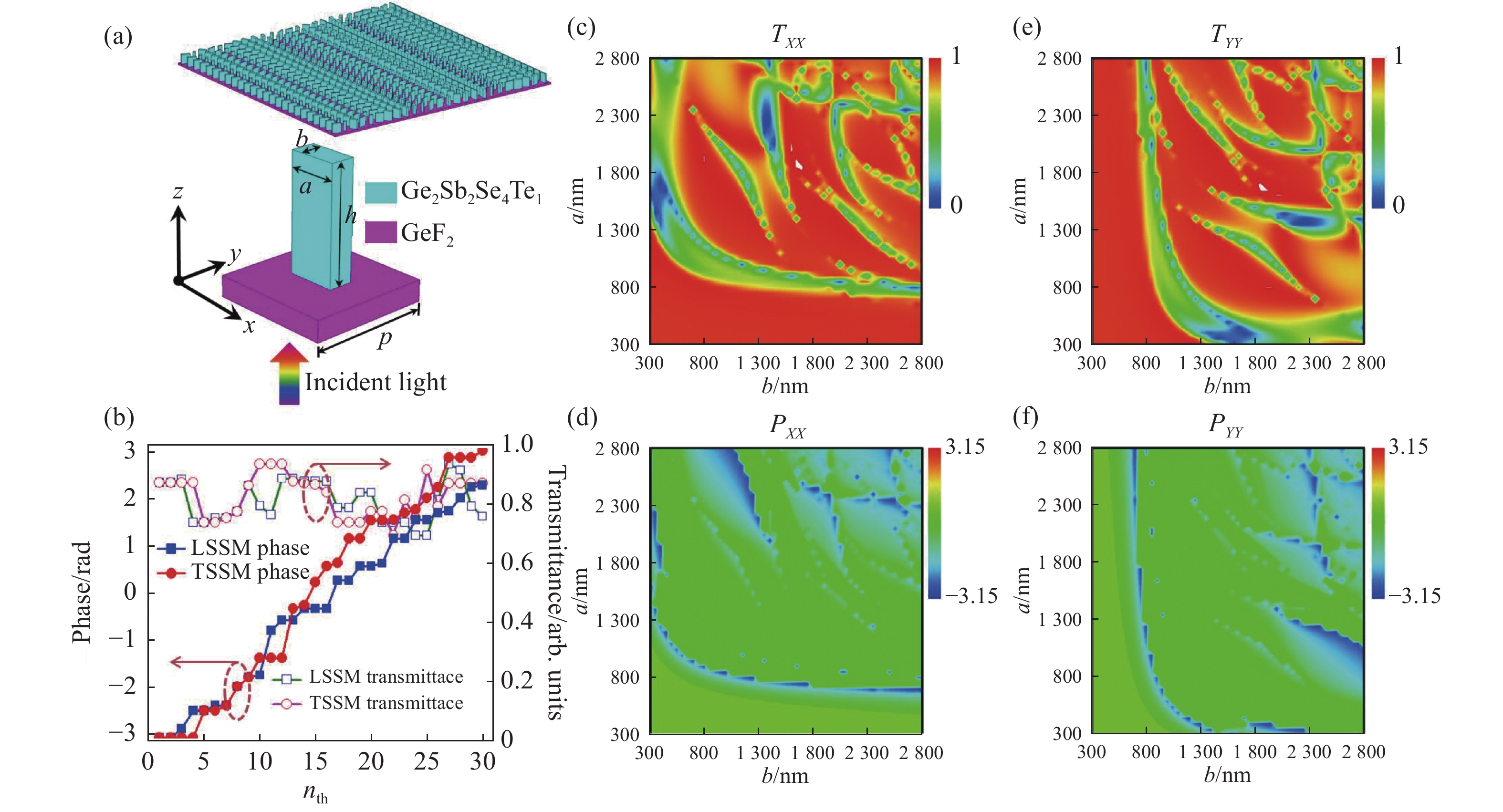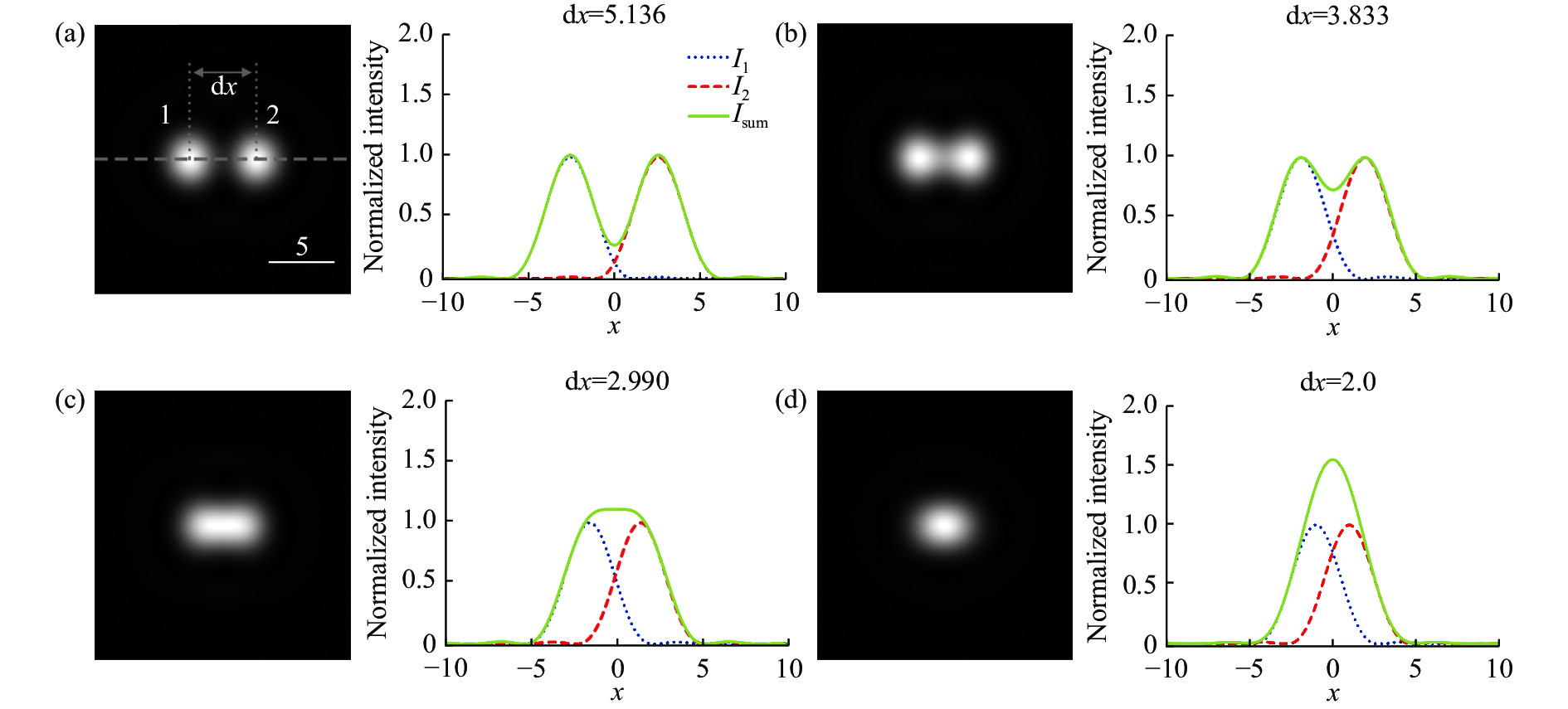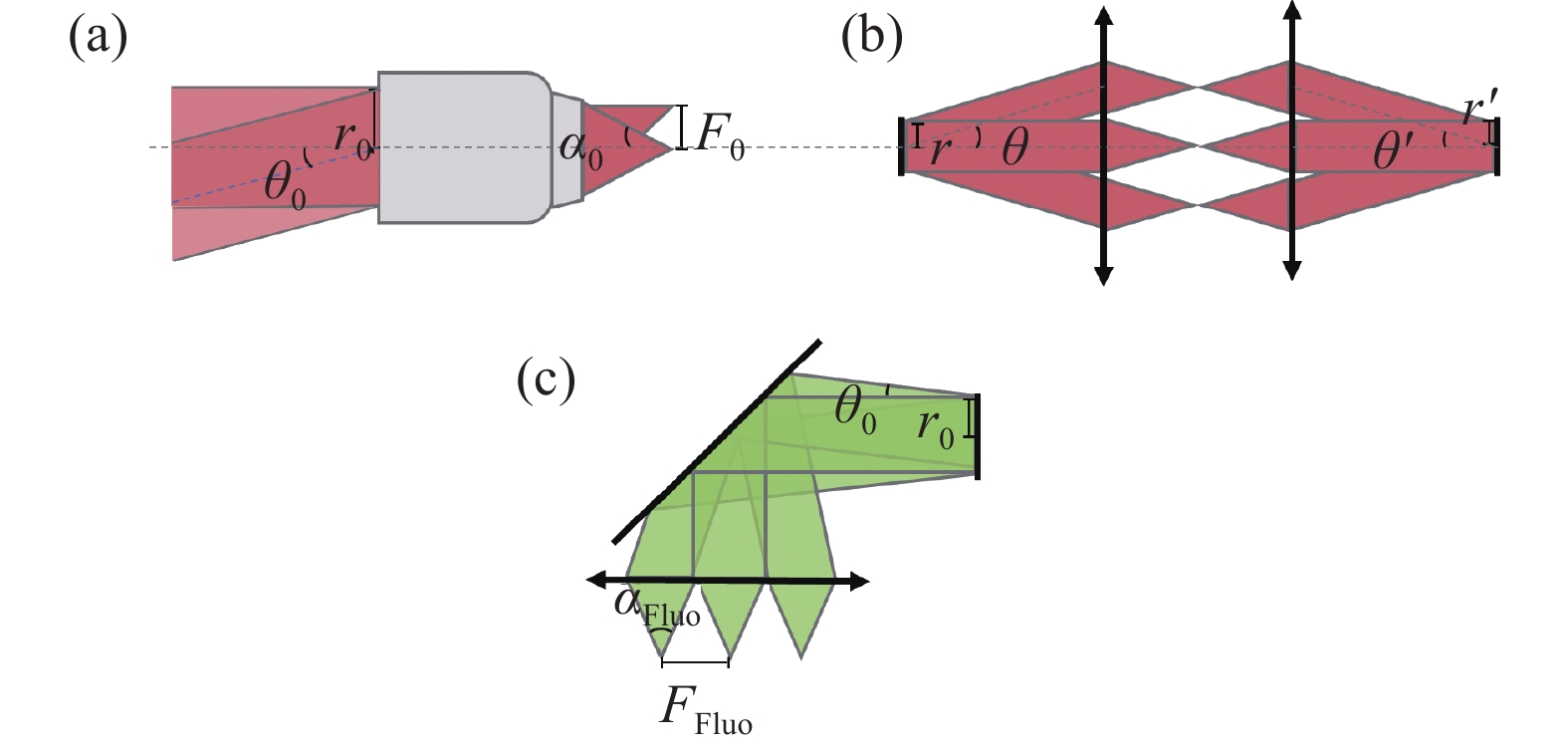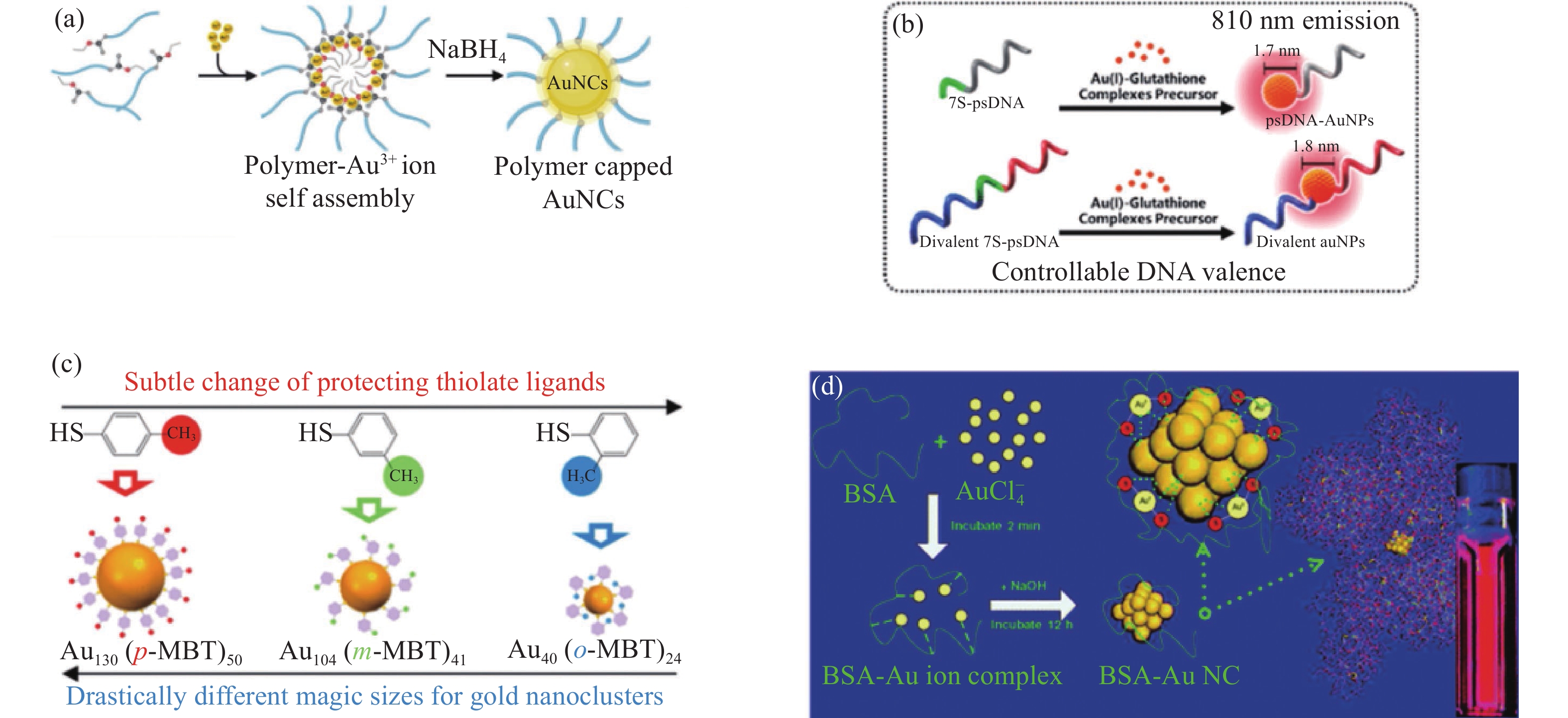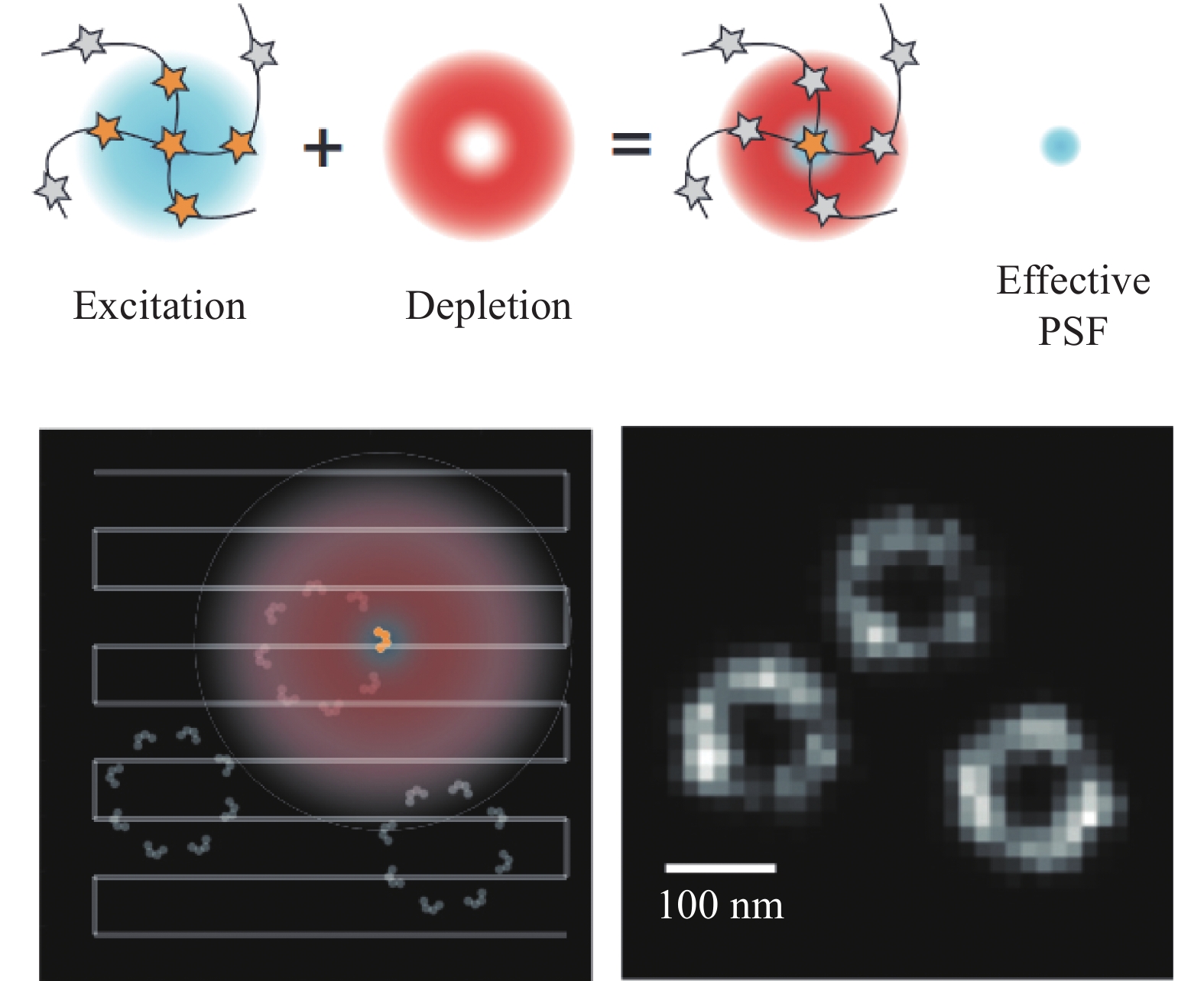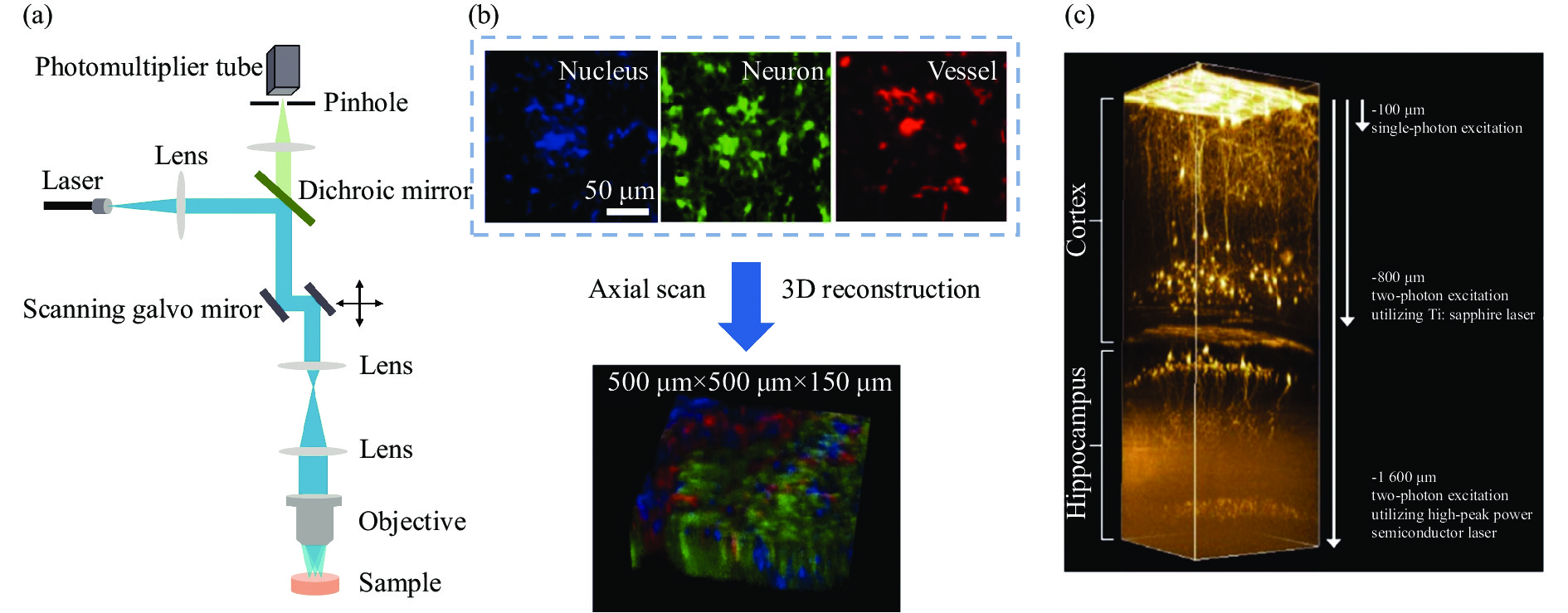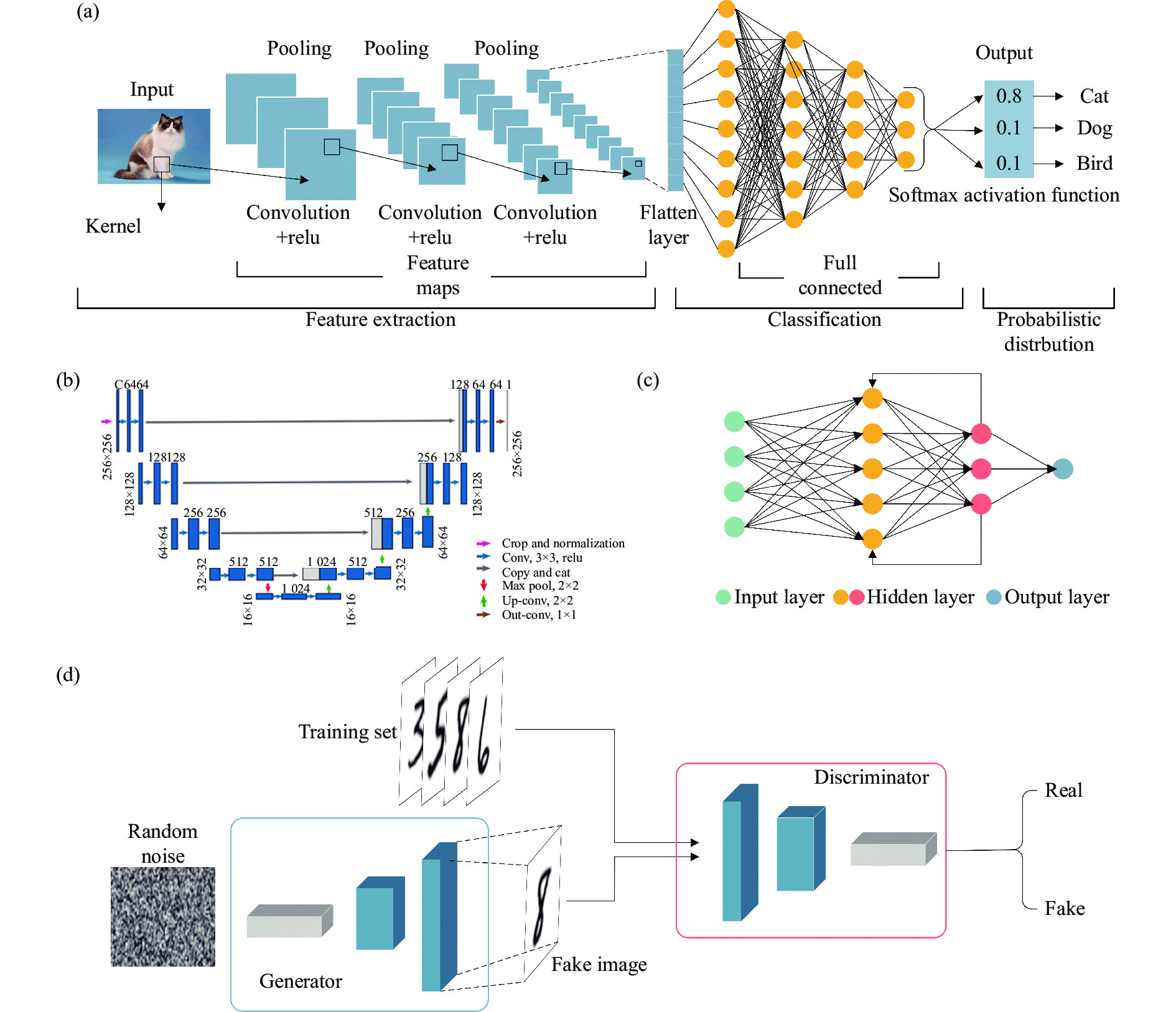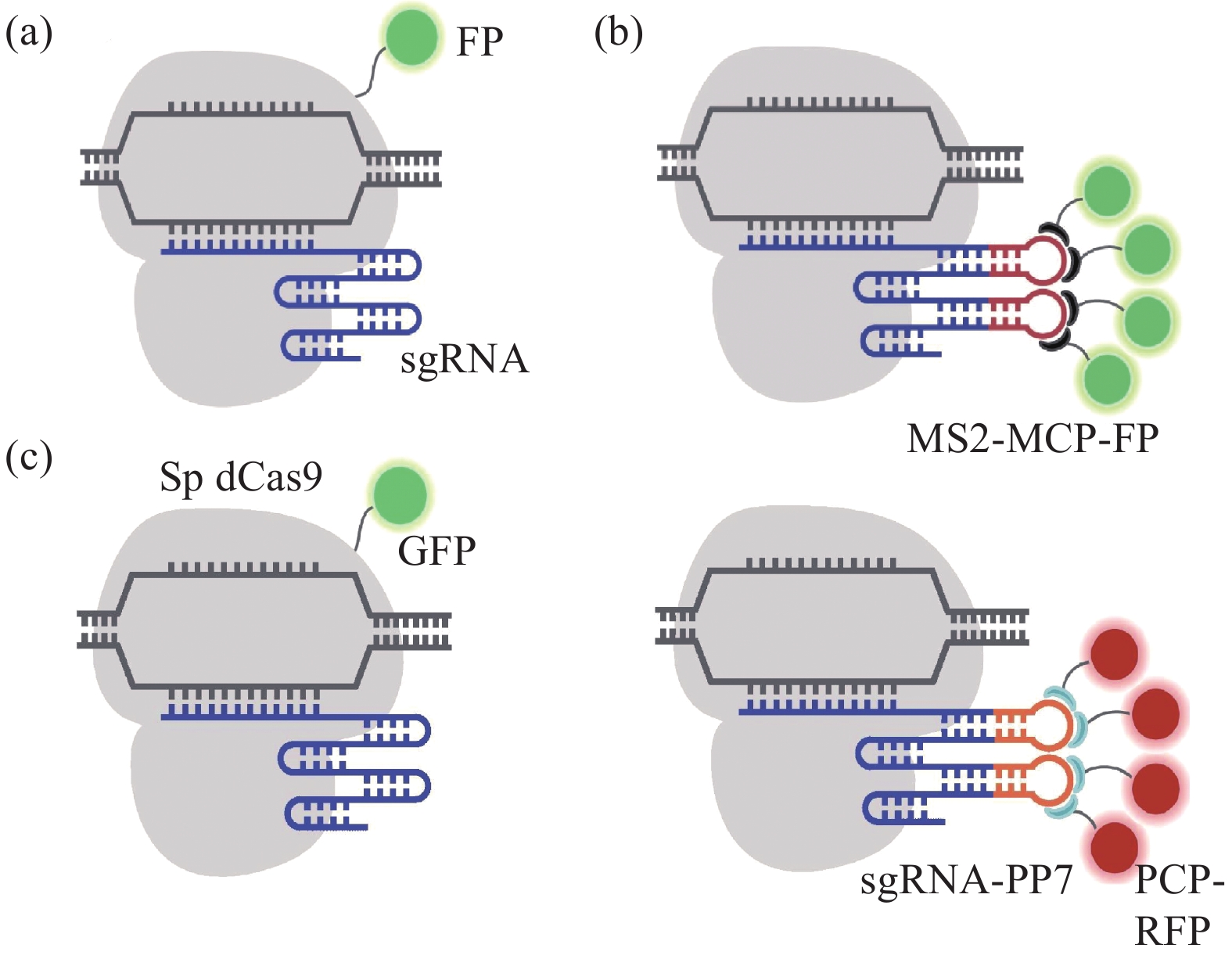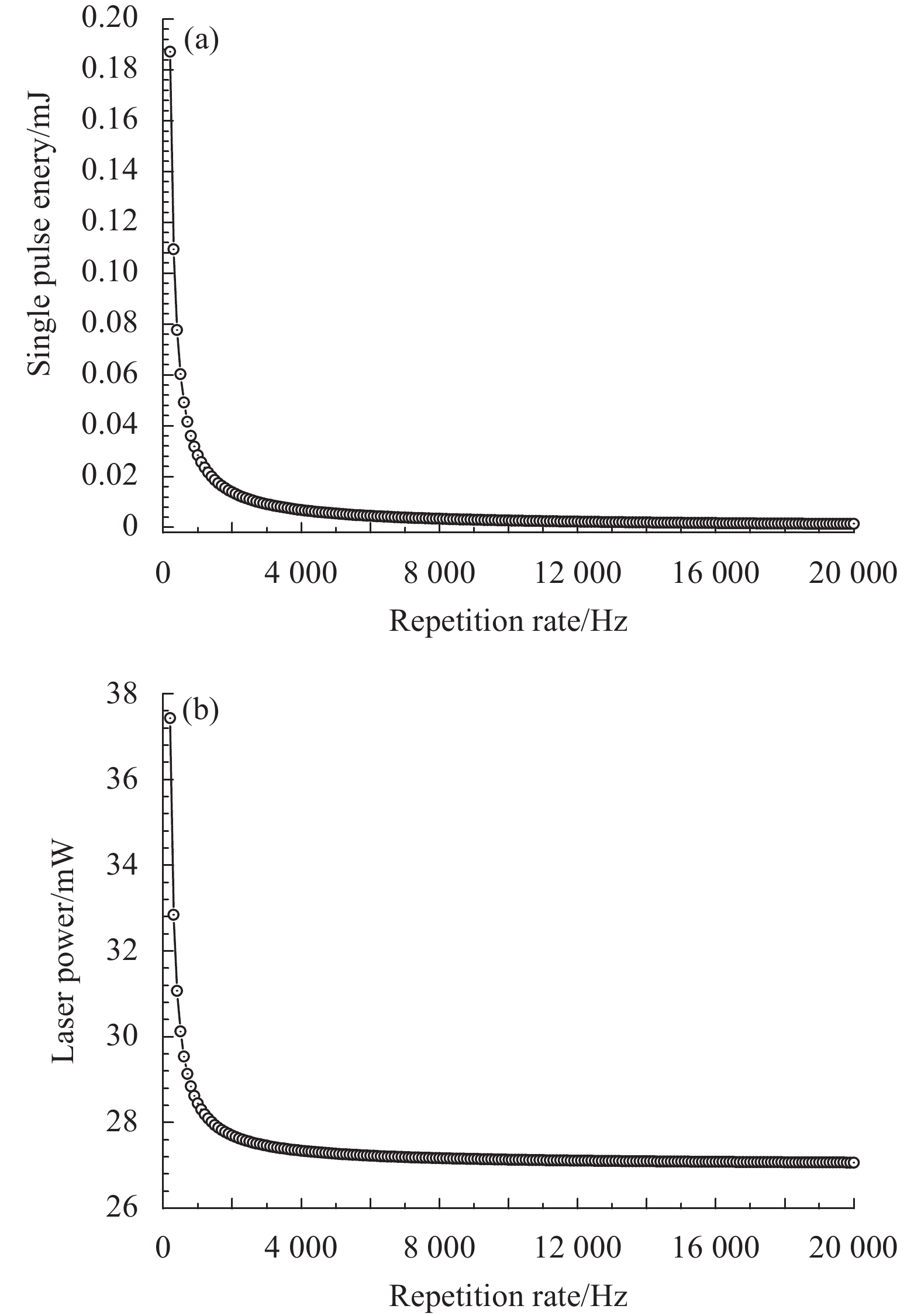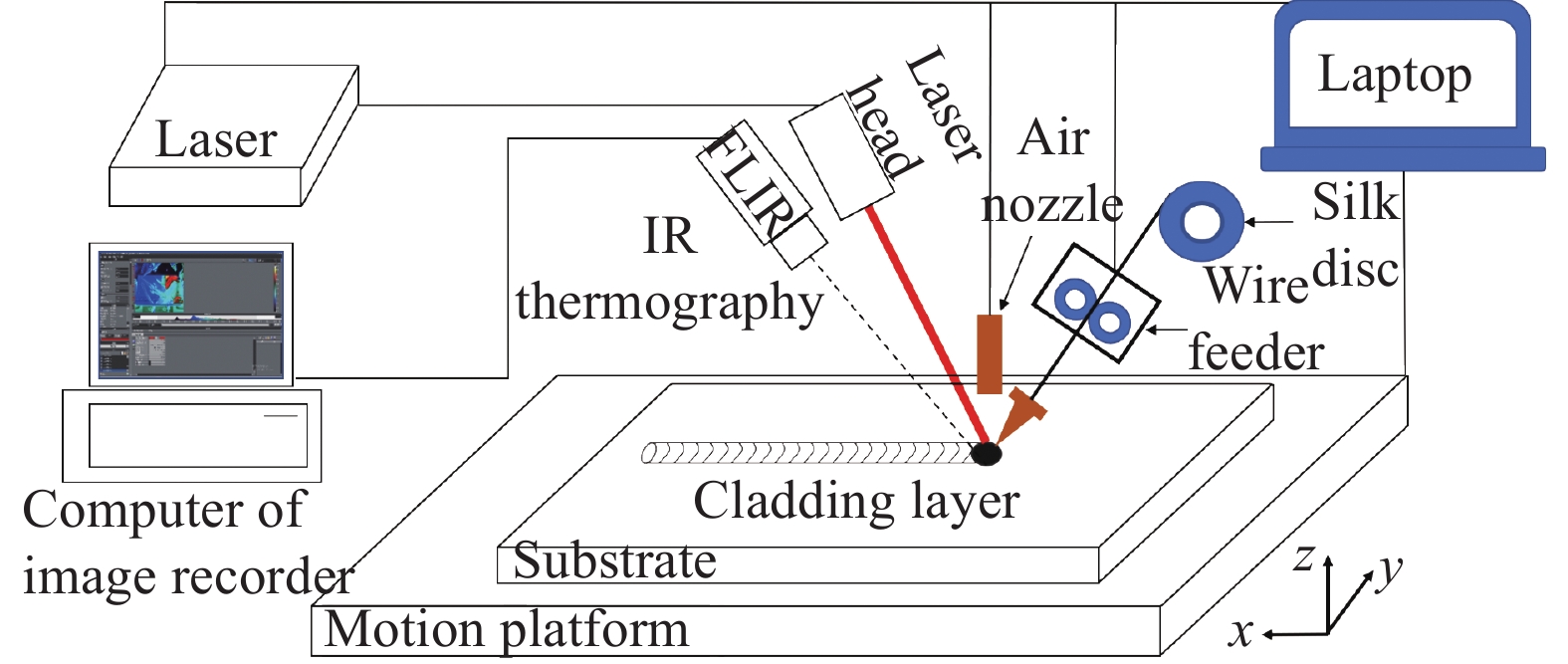2022 Vol. 51, No. 11
column
- Photoelectric measurement
- Lasers & Laser optics
- Infrared technology and application
- Optical communication and sensing
- Micro-nano optics
- Materials & Thin films
- Optical design
- Optical fabrication
- Special issue-Fluorescence microscopy: techniques and applications
- Lasers & Laser optics
- Materials & Thin films
2022, 51(11): 20220108.
doi: 10.3788/IRLA20220108
The dual-comb system has its unique advantages and broad development prospects in the fields of high precision absolute distance measurement, 3-D imaging and spectral measurement. In this paper, an asynchronous locking technique based on phase-locked loop principle was proposed, which can precisely lock the repetition rate difference in dual-comb system. In the experiment, a dual-comb system with a repetition rate of about 155.711 MHz and 155.714 MHz was adopted. By controlling the driving voltage of PZTs through feedback, the length of the laser resonator was controlled to achieve the locking of the repetition rate difference, and the frequency counter was used to collect the data of the repetition rate difference after locking. Allan deviation and standard deviation were used as evaluation indexes of frequency stability. Finally, within the average time of 1 s, the Allan deviation of repetition rate difference was 1.8×10−13, and the jittering standard deviation was 40.689 μHz. The results show that this technology can adjust the repetition rate difference flexibly, and has the advantages of high locking accuracy and strong disturbance rejection.
2022, 51(11): 20210955.
doi: 10.3788/IRLA20210955
In order to solve such problems as synchronization, high cost and others in traditional binocular fringe structured light 3D reconstruction, a virtual binocular fringe structured light 3D reconstruction method based on a single camera is proposed. The virtual binocular fringe structured light 3D reconstruction system with binocular vision is designed using a single camera, two biprisms and one projector. Biprism refraction and light splitting are used to change the path of reflected light on the surface of the measured object, by which the goal of acquisition of multi-view images are attained under single camera. Through the multi-frequency heterodyne method, stereo matching and binocular calibration of virtual binocular, the depth information of the measured object is obtained and the point cloud is reconstructed. Experimental results show that the root mean square error of the proposed method and the real binocular structured light method to measure the standard ball are 0.037 9 mm and 0.030 5 mm respectively. The proposed method in this paper can promote the development of binocular fringe structured light technology in the aspects of rapidity, low cost, miniaturization, etc. At the same time, this method can be extended to the color camera based fringe structured light 3D reconstruction and projection speckle structured light 3D reconstruction.
2022, 51(11): 20220116.
doi: 10.3788/IRLA20220116
In order to ensure the normal operation of the star sensor during the on-orbit mission of the application platform, it needs to be thermally designed. First, a process of thermal analysis and optimization was proposed, which combined with the conditions of the external heat flow, installation layout and working mode of the micro star sensor assembly. In the process of thermal analysis optimization, the influence of various factors, such as optical, mechanical and thermal, was considered. Second, a thermal control scheme of the micro star sensor assembly was designed. The thermal control scheme proposed a design idea of using active electric heating and homogenizing the temperature between the light-shield and the star sensor body, which solved the problems of complex space thermal environment, higher temperature control requirements, and heat dissipation path limited by a installation structure during the on-orbit period of the micro star sensor module. This scheme ensured the effective and reliable work of the micro star sensor assembly. Third, an I-DEAS/TMG finite element mode was established. The thermal control simulation of the micro star sensor assembly under high and low temperature conditions was carried out, and the simulation results of the temperature distribution and uniformity of the star sensor assembly were analyzed. Finally, a ground test was carried out to ensure the correctness of the thermal control scheme, and the test results met the thermal requirement of the star sensor assembly. This paper can provide a reference for the following thermal design of micro star sensor assembly of on-orbit platforms.
2022, 51(11): 20220076.
doi: 10.3788/IRLA20220076
Aiming at on-orbit correlation between space-based observations and cataloging of space debris, observation model of space-based optical cameras for debris was established, the impact of on-orbit environment on observations was analyzed, furthermore, a space debris identification method based on trajectory consistency detection was designed. In order to satisfy the applications on-orbit, a debris identification method, fusion of DTW and trajectory topography difference quantification, was proposed. Firstly, using DTW to screen out one predicted trajectory which is closest to the real trajectory; Further, quantifying the morphology difference between the closest trajectories found in the first step as the standard deviation of the total error between them; Finally, using statistical testing to confirm the consistency between the two trajectories. The two trajectories were consistent means that the debris was identified successfully. The comparison of the stability between the method proposed in this paper and the method based on trajectory line fitting and parameter error testing was carried out, and the results demonstrate that, method based on fusion of DTW and trajectory topography difference quantification is the more stable method, and the stability is improved by 56.5% compared with another method. The method proposed in this paper is not being affected by the factors such as debris motion characteristics and observation environment, and can be widely used in satellite perception and protection.
2022, 51(11): 20220124.
doi: 10.3788/IRLA20220124
When the collimator is placed horizontally and installed obliquely, its optical parameters will be greatly different due to different stress states. In order to accurately evaluate the focal length of collimator, according to the mapping relationship between the point on the focal plane of the collimator and the angle of the total station, an accurate mathematical model of the relationship between the focal length and the angle of the total station under the condition of oblique installation is established, the principle projection error caused by the rotation of the vertical axis of the total station is corrected. Several groups of data are collected by total station and experimental verification is carried out. After correcting the distortion, the focal length calculated by each testing point when the line segment is parallel to the vertical wire are 1 980.03 mm, 1 983.45 mm, 1 982.79 mm, the average focal length, i.e. the true value, is 1 982.09 mm. When the distortion is corrected but the projection error is not corrected, the focal length calculated from each testing point when the line segment is parallel to the horizontal wire of the reticle is 996.42 mm, 995.23 mm, 995.22 mm, the relative error of the average focal length is 50.2%. The range of focal length calculated by each testing point when the line segment is located in different quadrants and parallel to the horizontal wire of the reticle is 4.74 mm after correcting the projection error and distortion, the average focal length of all testing points is 1982.69 mm, the difference between the average value and the true value is 0.6 mm. The maximum relative error between the extended uncertainty of the focal length calculated by different testing point and the true value of the focal length is 0.36%. This value is far less than the stipulation in GB/T 9917.1-2002 that the relative error between the measured focal length and the nominal focal length in the photographic lens does not exceed ±5%. The experimental results show that the model has universality and high accuracy, the phase of the target slit in the reticle is allowed to be a random value, there is no need to adjust the slit to be strictly parallel to the vertical wire of the total station, the model has great engineering application value for the in-situ detection of the focal length of the collimator under the condition of oblique installation.
2022, 51(11): 20220093.
doi: 10.3788/IRLA20220093
Spectral detection technology has a wide range of applications in biomedicine, national defense, security check, production monitoring, geological survey, material analysis, environmental protection, disaster reduction and so on. However, due to the existing detectors and application technology conditions, the flexibility and applicability of traditional spectral instruments is limited in above territories. The miniaturization and integration of spectral systems is one of the inevitable development trends. With the critical demand of miniaturized, chip and intelligent spectral imaging and the maturation of the computational spectral imaging theory, computational spectrometers have attracted much attention because of the ability to improve spectral resolution while reducing the mass and volume of devices or systems. The computational spectrometers based on compressed sensing theory have the advantages of short calculation time, wide application range, flexible structure, low cost and so on. This review compares the design methods of various spectral structure based on the framework of compressed sensing theory, analyzes the compression spectral measurement technology which realizes the direct coding of spectrum domain and reveals the development trend and bottleneck of miniaturized, intelligent chip spectrometers based on compressed sensing algorithm.
2022, 51(11): 20220396.
doi: 10.3788/IRLA20220396
In the conventional 4f phase coherent imaging measurement technology, phase objects were used to convert the phase change generated by the measured material into a directly observable amplitude change to achieve the measurement of the nonlinear refractive index of the material. However, the thickness of the phase object was fixed, and the phase delay changes with the laser wavelength, and a suitable phase object needs to be replaced in the measurement. The influence of different laser wavelength on the phase shift of the phase object was theoretically analyzed, and the influence of the radius of the phase object and the phase shift on the sensitivity of the 4f phase coherent imaging system was discussed in detail. A phase-adjustable phase object was realized by using the phase delay of two beams in Michelson interferometer instead of the conventional phase object. Because the phase delay of the two beams of Michelson interferometer was continuously adjustable, it makes the sensitivity of measurement at different shapes and different wavelengths of laser optimal. This method further improves the 4f phase coherent imaging measurement technology, not only solves the deficiencies of the conventional phase object, but also improves the accuracy of the measurement.
2022, 51(11): 20220088.
doi: 10.3788/IRLA20220088
Fringe projection profilometry (FPP) was widely used in defect detection, reverse engineering, computer vision and other fields due to its non-contact and high measurement accuracy. However, traditional FPP can only obtain the 3D profile of the measured object within limited depth of field in a single measurement, and can not achieve accurate measurement of multiple measured objects with different depth simultaneously. A mirror-assisted FPP system was constructed by adding two mirrors and two prisms on the basis of traditional FPP system in this paper. The proposed method can transform the measured objects in different depth of field ranges to the same depth of field range, so as to achieve high-precision measurement of the 3D profiles of multiple measured objects in different depth of field ranges. The effect of depth of field on 3D profile measurement results was verified using a standard six-step gypsum model. Meanwhile, the profiles of two standard table tennis within different depth of field ranges were measured using the traditional FPP system and the proposed FPP system. The table tennis radius as error results were obtained from the measured profile. The relative errors of the focused and the unfocused table tennis measured by the traditional FPP were 2.9% and 34.3%, respectively. And the corresponding measured errors by proposed mirror-assisted FPP were 2.7% and 5.3%, respectively. The results show that the proposed method can compensate the errors caused by the depth of field, and verifies the feasibility of the proposed method in 3D measurement with different depth of field ranges.
2022, 51(11): 20210144.
doi: 10.3788/IRLA20210144
In the manufacturing of ultra-precision optical elements, high-precision optical detection technology is the key to further improve the optical processing accuracy and to characterize and evaluate the optical surface morphology. Non-contact optical detection method has been widely used because of its high efficiency and no damage detection. But the external environment disturbance can easily affect the optical probe and reduce the detection accuracy. Therefore, a method of discrete detection path and splicing is proposed in this paper. The traditional spiral path is divided into multi-circular and multi-path paths. The compensation of environmental disturbance error is realized by the data splicing between paths. The parameter setting of discrete detection path is analyzed, and a uniform distribution strategy of circular path is given. Finally, based on the optical detection platform, the verification experiment of the compensation method of environmental error is carried out. Compared with the uncompensated results, the measurement relative error is reduced from 24.3% to 4.3%.
2022, 51(11): 20220105.
doi: 10.3788/IRLA20220105
In order to study the operational effectiveness of aircraft terminal infrared countermeasure, the infrared countermeasure simulation system is established to model and simulate the aircraft infrared characteristics, decoy jamming characteristics and laser directional jamming characteristics respectively. The infrared countermeasure scene is established by the method of real-time calculation of infrared characteristics to combine the aircraft terminal defense of different operational environments and jamming scenes. Infrared image rendering and model solving are carried out to provide real-time infrared countermeasure scene for infrared jamming effectiveness evaluation. Combined with the typical combat situation and aircraft maneuver mode, the dynamic infrared scene of target and decoy in the seeker field of view is simulated and analyzed, and the jamming effectiveness evaluation and jamming use strategy research of different jamming means for aircraft terminal defense can be carried out. The simulation results show that the aircraft infrared countermeasure simulation system can effectively study the operational effectiveness and jamming strategy formulate of the terminal infrared countermeasure.
2022, 51(11): 20220060.
doi: 10.3788/IRLA20220060
At present, infrared images are widely used in various fields, but limited by the non-uniformity of detector unit, the infrared image has the disadvantages of low signal-to-noise ratio and blurred visual effects, which seriously affect its application in advanced fields. Commonly used denoising algorithms cannot take into account the smoothing of denoising and the preservation of edge details. In response to the above problems, this paper proposes a multi-drop attention residual denoising network based on guided filtering. A guided convolution module is designed according to the principle of guided filtering and a multi-drop attention residual module is designed for both the extraction of shallow and deep features. Experiments have proved that the network after adding the new module can effectively reduce the noise of infrared images, and can maintain the edge detail information in the image to the greatest extent, improve the visual effect, and also have good performance on the PSRN and SSIM indicators.
2022, 51(11): 20220100.
doi: 10.3788/IRLA20220100
Region of interest (ROI) readout is an important technology used in the infrared focal plane array(IRFPA) and image sensor readout integrated circuits to improve the frame rate and reduce the bandwidth, which is realized by the reduced ROI size and the readout data volume. Two ROI readout modes including asynchronous readout and synchronous readout are introduced in this paper. The asynchronous readout mode exhibits poor scalability and the problem of the competitive risk, while the synchronous readout mode occupies pixel area and the ROI switching speed is slow. To solve these problems, this paper proposes a row-column control word architecture based on synchronous readout mode, and a reusable unit circuit is designed to improve the scalability for various array size. The circuits and layout for the proposed architecture are designed, which are verified by circuit simulation. Compared with other architectures, the proposal realizes ROI readout at arbitrary position with minimum size of 1×1. Moreover, problems including the occupying of pixel area and competitive risk are solved, as well as the ROI switching speed.
2022, 51(11): 20220112.
doi: 10.3788/IRLA20220112
With the continuous expansion of the scale of the national grid, overhead conductors, as an important component of the power system, have become extremely important to its regular inspection. At the same time, with the opening of the low-altitude flight field, the identification of overhead conductors has also become extremely important to ensure the normal operation of the national grid and the safety of low-altitude flight. The method for identifying overhead wires in infrared aerial images was proposed using the Deeplabv3+ semantic segmentation network model, and the algorithm was improved according to the characteristics of infrared overhead wire image targets in this paper. Firstly, an attention mechanism was added to the feature extraction backbone network ResNet50 of the original Deeplabv3+ algorithm, so that the network highlights the characteristics of the area where the wire target was located, and paid more attention to the location of the wire target, thereby weakening the background and other non-main area features; Then, the encoder part of Deeplabv3+ was improved, and the Feature Pyramid Networks (FPN) was added to the ResNet50 model, which can fuse the shallow and deep features, enhance the network's ability to identify the attributes of targets of different sizes, and the performance of small targets such as wires, and then improve the overall recognition effect of the network. The experimental results show that the improved algorithm has good detection performance, the average pixel accuracy is 93.52%, and the average intersection ratio is 87.83%.
2022, 51(11): 20220111.
doi: 10.3788/IRLA20220111
A seafloor seismic and tsunami monitoring system based on fiber optic interferometric technology was developed and installed in the nearby waters at China's State Oceanic Administration’s (SOA’s) Wuchang (Hainan Province, China) monitoring site. The developed tri-component version of fiber optic interferometric seismometer had a resonance frequency of about 250 Hz, a sensitivity of 57 dB (0 dB represents 1 rad/g), with the operation frequency range of 0.005-50 Hz and the minimum detectable vibration acceleration of 43.4 ng/$\sqrt{{\rm{Hz}}} $ , while the fiber optic interferometric water level monitor has an accuracy of ±1 cm, a measurement range of 0-110 m. The system had been operating well more than 4 years since October, 2017, and earthquakes as well as real-time water levels had been recorded during the long-term field trial. From January in 2018 to December in 2021, there were over 60 earthquakes with ML6.0+ in Northeast Asia area, and 39 earthquakes were recorded by our system. As an example, the detailed measurement results about the ML6.8+ earthquake in adjacent waters of the Sulawesi, Indonesia were given. In this paper, we reported on the planning, design, fabrication, laboratory tests, sea installation, observation, data acquisition, and analysis associated with this effort. The system installa-tion process was introduced, the working principle of the seismometer and water level monitor was described, and the typical recorded earthquake and real-time water level monitoring data were presented and analyzed.
2022, 51(11): 20220084.
doi: 10.3788/IRLA20220084
Aiming at the routing and wavelength problems of dynamic services in optical transport network, a deep routing wavelength assignment algorithm based on reinforcement learning is proposed. The algorithm is based on a software defined network architecture, flexibly adjusts and controls the optical transport network through reinforcement learning, and realizes the optimization of the optical network routing wavelength assignment strategy. For the problem of routing selection, combined with the wavelength usage on the link, the A3C algorithm is used to select the appropriate route to minimize the blocking rate; for the problem of wavelength assignment, the first fit algorithm is used to select the wavelength. Considering multiple indicators such as blocking rate, resource utilization, policy entropy, value loss, execution time, and speed of algorithm convergence, the 14-node NSFNET network topology simulation experiment is implemented. The results show that when the channel contains 18 wavelengths, compared with the traditional KSP-FF algorithm, the blocking rate of this routing wavelength assignment algorithm is reduced by 0.06, and the resource utilization rate is increased by 0.02, but the execution time is increased. When the number of wavelengths exceeds 45, compared with KSP-FF, the proposed algorithm maintains the blocking rate and resource utilization, while the execution time begins to decrease. When the number of wavelengths is 58, compared with KSP-FF, the proposed algorithm's execution time is reduced by 0.07 ms. It can be seen that the proposed algorithm optimizes the routing and wavelength assignment.
2022, 51(11): 20220136.
doi: 10.3788/IRLA20220136
Micro-structural elements on tilted and curved surfaces has important applications in microelectronics, micro-optics, micro-fluidics and other fields. In order to achieve rapid and low-cost lithography of tilted and curved surfaces, the method is proposed, in which pure phase computer generated holography technology based on liquid crystal spatial light modulator is used to project target pattern to the tilted and curved surfaces completing exposure. The tilted and curved surfaces pure phase computer generated holographic light fields are generated, and the speckle elimination and stray light removal of the optical field are processed. The experimental verification of tilted and curved surfaces lithography is completed. The experimental results show that the method has high machining efficiency, flexible design and is not limited by a single structure. It is a potential 3D micro-nano machining method.
2022, 51(11): 20220232.
doi: 10.3788/IRLA20220232
Due to the limited load of aircraft, weight was always the key index in the structural design of airborne imaging system. As the main load bearing structure of the optical system in the airborne imaging system, the main support structure must be lightweight. However, the previous lightweight design methods for the main support structure of airborne imaging system mainly included specific measures such as selecting metal materials with high specific stiffness, optimizing the layout of the frame structure, adjusting the wall thickness, and adding weight loss trough. Due to the high density and linear expansion coefficient of metal materials, the lightness extent of this lightweight design method was not high, and sometimes couldn’t meet the requirements of athermalization design of high-precision optical systems. Therefore, a new lightweight design method combining composite materials and metal materials was proposed. Carbon fiber composite materials with lower density and lower linear expansion coefficient was used as the main support molding material, and titanium alloy was used as the external interface material. The parameter optimization design was carried out with the lightest target as the goal and the fundamental frequency as the constraint. Finally, the main support structure with higher lightweight and better dimensional stability was obtained by using the prepreg manufacturing and laying method. The effectiveness of the new method was verified by numerical calculation, simulation analysis and vibration test. The results showed that the fundamental frequency of the new lightweight main support system was 425 Hz. The weight was 10.5 kg, which was reduced by 33.5%. The variation of axial optical spacing was 0.021 mm at 60 ℃ uniform temperature rise, which was reduced by 84.9%. The research results showed that the new lightweight design method was reasonable and effective, which solved the problem of structural lightweight and optical athermalized design. It was applied to the main support structure of the airborne infrared imaging system.
2022, 51(11): 20220109.
doi: 10.3788/IRLA20220109
Aiming at a new type of single cantilever main support structure of space camera, both wave aberration sensitivity model and integrated simulation analysis are proposed to calculate the camera's wave aberration in the lightweight design of optomechanical structure, so as to ensure the imaging quality under mechanical conditions. The proposed wave aberration sensitivity method can model based on the linear relationship between wave aberration and misalignment, which is of great significance to guide the optimal design of optomechanical structure under the constraint of the camera imaging quality. Firstly, the sensitivity model of optical element misalignment and wavefront aberration is derived based on the principle of optical system misalignment. Then, the nodal displacements under mechanical condition are obtained by finite element method, and the misalignment of primary and secondary mirrors is calculated based on best-fit fitting method. The wavefront aberration of the camera is obtained by the optical analysis of the misaligned system. Finally, the two methods proposed in this paper are used for modeling and analysis of a 5 kg level space optical camera, and the corresponding gravity condition analysis and test are also performed. The error of sensitivity model is 16.8% compared with the optomechanical integrated simulation method, and the sensitivity model can be applied to the rapid calculation of system imaging performance in the design phase.
2022, 51(11): 20220398.
doi: 10.3788/IRLA20220398
Metasurfaces, artificial subwavelength planar structures based on anisotropic units, manifest an unparalleled ability in manipulating the amplitude, phase and polarization of the incident electromagnetic (EM) waves, thus enabling arbitrary modulation of wavefront. As of the most metasurface embodiments, metalenses have aroused great interest of researchers by virtue of their extraordinary wavefront manipulation, ultracompact size, versatility and high compatibility with semiconductor processes. However, current approaches are mostly restricted by predefined phase profiles, disabling polarization multiplexing and intensity-adjustable focusing performance simultaneously. Moreover, the functionalities of metalens are immediately locked once the structure is determined, seriously hindering their broader potential applications. To this end, two Ge2Sb2Se4Te1-assisted spin-decoupled metalenses are proposed, which enable completely transverse or longitudinal spin-dependent split focusing upon the illumination of left-/right-handed circularly polarized (LCP or RCP) light by synergizing PB and propagation phase. Since the spin-dependent focusing are susceptible to the polarization states of incidence, the relative intensity of split focal spots can be controlled by manipulating the weights of LCP and RCP component, leading to the intensity-adjustable virtue. Furthermore, the focusing performance of our scheme can be continuously tuned and ultimately realize dynamically switching of "ON" and "OFF" states by actuating GSST from amorphous transiting into crystalline state, showing huge potential applications in the fields of spin-controlled nanophotonics, optical imaging and optical sensors.
2022, 51(11): 20220430.
doi: 10.3788/IRLA20220430
A novel design method for long-wave infrared (LWIR) fisheye lens was proposed based on Gaussian optics and the third-order aberration theory. The half field of view (FOV) of traditional inversed telephoto wide-angle lens increased from $\pm {70^\circ }$ to $\pm {100^\circ }$ by adding a negative meniscus to pre-group. By using the equidistant projection imaging method, the f-θ distortion of the system was less than 6%. The focal length was 1.97 mm, its relative aperture was 1∶1, the system was telecentric structure in the image space, and its relative illumination of the marginal FOV achieved 0.8. A five-piece aspheric design was adopted to increase the aperture and remove the off-axis aberrations. The imaging quality is near-diffraction-limited. The modulation transfer function value was above 0.37@42 lp/mm. The imaging quality of the system was stable at a wide range of temperatures with the mechanically passive athermal method. The results have a certain reference for LWIR fisheye optical system design.
2022, 51(11): 20220510.
doi: 10.3788/IRLA20220510
Aiming to the demand for efficiency and flexibility under multi variety and variable batch production and the problem that existing manufacturing units were difficult to support high quality consistency and efficiency of key parts under fragmented orders, a Cmax and minimizing the difference of virtual manufacturing cell composition before and after reconfiguration, an improved genetic algorithm based on inherited reconfiguration decoding strategy was proposed, and a similarity calculation method between orders under known cell configuration and the original manufacturing cell was designed. It ensures the maximization of the manufacturing cell and carries out reconstruction by inheriting the configuration of the original manufacturing cell. Finally, the validity and feasibility of the proposed model and algorithm are verified by the actual production data of a photoelectric observation product.
2022, 51(11): 20220735.
doi: 10.3788/IRLA20220735
Spatial resolution is a key specific parameter of the optical microscopic imaging system. According to the optical diffraction theory, the spatial resolution of imaging system is determined by the wavelength of illumination light and the numerical aperture of microscope objective. In the practical imaging process, the resolutions of microscopic imaging system obtained from different criteria are slightly different. It is necessary to select an appropriate criterion according to the coherence of light sources and the structural characteristics of obsversed targets to accurately calculate the resolutions of imaging system. In this paper, the calculation methods for spatial resolution under different conditions are provided via theoretical analysis and numerical simulation. Furthermore, we compare and discusse the difference of imaging resolutions under the illuminations of coherent and incoherent light sources for double points and double slits targets, respectively.
2022, 51(11): 20220550.
doi: 10.3788/IRLA20220550
Two-photon microscopy (TPM) imaging has the characteristics of high resolution, natural chromatography capability and large penetration depth, and plays an important role in the imaging of living animals. How to enlarge the field-of-view (FOV) of TPM while maintaining the high resolution to monitor large-scale dynamic responses in biomedical applications especially brain science, however, remains challenging. In this paper, the recent progress of large-FOV two-photon imaging technology is reviewed. The theoretical basis of achieving large-FOV TPM is elaborated from the perspective of optical invariant. Large- FOV TPM methods can be divided into three categories: FOV-edge aberration calibration with scanning relay engines, the design and manufacture of high-throughput objectives and correcting aberrations with adaptive optics. These methods have highly strengthened the capability of TPM used in large scale biomedical imaging. If further improved especially the imaging speed, large-FOV TPM will have great potential to contribute the development of life science and broaden the cognitive of large-scale biological activities. Large-FOV TPM, based on its outstanding spatial and temporal resolution, will become a powerful tool for dynamic monitoring across large-area in some applications that requires high resolution and mesoscale imaging simultaneously.
2022, 51(11): 20220494.
doi: 10.3788/IRLA20220494
Confocal microscopy has high spatial resolution and signal to background ratio, possessing the capability of three-dimensional tomography of biological samples, and thus has been widely used in medicine and biology areas. Light in near-infrared II (NIR-II, 900-1 880 nm) regions fulfils moderate absorption, low scattering in biological tissues, and weak autofluorescence of biological tissues. Therefore, NIR-II in vivo fluorescence imaging has the advantages of large depth and high contrast. Point-excitation and point-detection based NIR-II confocal microscopy combines the advantages of the two technologies mentioned above and features high spatial resolution and high signal to background ratio in large-depth biological imaging. Therefore, it has been widely used in the biomedical fields. This review summarizes the principle and the development progress of NIR-II confocal microscopy and the application of biological imaging based on it. The future improvement and development directions of NIR-II confocal microscopy are also discussed.
2022, 51(11): 20220527.
doi: 10.3788/IRLA20220527
In recent years, due to the unique advantages such as excellent fluorescence properties, ultra-small size, precise chemical structure and good biocompatibility, gold nanoclusters (AuNCs) have become a kind of emerging fluorescent nanoprobe of great concern. In order to promote the application of AuNCs in fluorescence imaging, researchers have been devoted to designing preparation strategies for various high-performance fluorescent AuNCs. Based on the continuous understanding of the structure and luminescence mechanism of AuNCs, strategies such as enhancing the fluorescence quantum yield and cellular uptake of AuNCs have been proposed and applied to enhance the cellular imaging ability of AuNCs. These strategies greatly improve their potential as fluorescent imaging probes. Furthermore, fluorescent AuNCs are also utilized in advanced fluorescence imaging technologies such as fluorescence lifetime imaging and multi-photon fluorescence imaging. In addition, AuNCs with near-infrared II fluorescence have greatly promoted their application for in vivo imaging recently. This article summarizes the preparation methods of fluorescent AuNCs probes, reviews strategies to improve the fluorescence cellular imaging ability of AuNCs, and introduces the latest progress in the application of AuNCs in fluorescence imaging and also the challenges and future developments in the field.
2022, 51(11): 20220622.
doi: 10.3788/IRLA20220622
Observing dynamic interaction between organelles and analyzing the law of action is of great significance for revealing the mechanism behind the phenomenon of physiological and pathological processes. Due to the limitation of the optical diffraction determined by wavelength and aperture, traditional optical microscopes cannot observe the nanoscale fine structure of organelles and the dynamic changes of interactions among them. The emergence of super-resolution microscopy imaging technology provides an important mean for the study of organelle interaction. This paper introduces the fluorescence microscopy (STED), structured illumination imaging (SIM), and single-molecule localization imaging (SMLM). The application of these super-resolution microscopy in the study of dynamic interaction between organelles provides the expansion of application ideas for super-resolution microscopy. Finally, the advantages and disadvantages of super-resolution microscopy in the study of organelle interactions are analyzed. In conclusion, the demand and development trend of super-resolution microscopy technology in the imaging of intracellular organelle interaction in living cells is prospected, which provides a certain reference for the cross-integration development of optics, medicine and biology.
2022, 51(11): 20220546.
doi: 10.3788/IRLA20220546
With the advantages of high resolution, high sensitivity, high molecule specificity and non-invasive, fluorescence microscopy can characterize the morphological and molecular functional information of samples at the micron or even nanometer scale, making it an important tool for life science research. As microbiology research continues to advance, fluorescence microscopy is expected to provide dynamic and 3D observation of microscopic biological structures and molecular events. This paper systematically reviews the research progress of fast 3D fluorescence microscopy in recent years, including the main technical means, improvement strategies and representative research results of point-scan imaging, wide-field imaging, and projection tomography to improve the imaging speed, expand the imaging dimension and enhance the imaging quality. In the end, we look forward to the future challenges and prospects of fast 3D fluorescence microscopic imaging techonology.
2022, 51(11): 20220354.
doi: 10.3788/IRLA20220354
Light-sheet microscopy is a biological imaging technology that has been studied a lot in recent years. Compared with traditional confocal laser scanning microscopy, light-sheet microscopy can achieve rapid volume imaging with low phototoxicity. The illumination beam of light-sheet microscope can choose Gaussian beam or other non-diffracting beams (such as Bessel beam, Airy beam, etc.). Airy light-sheet microscopy is the most researched technology at present, but there is a big problem with ordinary Airy light-sheet microscopy. Airy beam has the characteristic of self-bending, which causes Airy beam to exceed detection at both ends of the field of view. The depth of field of the objective lens cannot produce the best imaging effect. The Airy beam was rotated by 45° to form a planar-Airy light-sheet, so that the Airy light-sheet did not exceed the depth of field of the detection objective, so as to increase the imaging field of view of the light-sheet microscope. And using two-photon fluorescence excitation technology, the post-processing process of the image was eliminated, greatly improving the efficiency of imaging. In this study, Matlab was used for optical simulation, and the imaging field of view (~900 μm) of the planar-Airy light-sheet microscope was increased by 50% compared with the imaging field of view (~600 μm) of the ordinary Airy light-sheet microscope. The constructed planar-Airy light-sheet microscope was calibrated with fluorescent microspheres, and the lateral resolution of the imaging system was (1.93±0.17) μm and the axial resolution was (3.19±0.41) μm. In the real-time observation of the zebrafish intracerebral hemorrhage model, imaging results with a temporal resolution of x$ \times $ y$ \times $ z = 0.60 mm$ \times $ 0.60 mm $ \times $ 0.40 mm/60 s can be obtained, and the growth and development of local blood vessels can be monitored in real-time to explore the mechanism of cerebral hemorrhage disease.
2022, 51(11): 20220541.
doi: 10.3788/IRLA20220541
Photoacoustic imaging technology based on laser-induced ultrasound mechanism combines the high contrast of optical imaging and the deep penetration of ultrasound imaging, which can reflect the distribution of endogenous absorbents in living organisms in a label-free and non-invasive way, especially suitable for real-time imaging of the whole brain of rodent models. In order to prove the application of photoacoustic imaging technology in brain science research and brain disease monitoring, a photoacoustic microscopic imaging system with spatial resolution of tens of microns and effective imaging depth of more than 1 mm was constructed. Taking APP/PS1 transgenic Alzheimer’s disease (AD) model mice and WT mice as research objects, the ability of photoacoustic imaging in characterizing the brain structure changes and vascular network of AD mice and WT mice was explored from three levels of brain tissue slices, in vitro whole brain and in vivo whole brain. It demonstrates the great potential of photoacoustic imaging technology in monitoring brain structural changes and cerebrovascular network characteristics during the development of brain diseases, which can provide deeper insights into many brain science studies and the development mechanism of neurodegenerative brain diseases.
2022, 51(11): 20220536.
doi: 10.3788/IRLA20220536
Fluorescence microscopy has the advantage of minimal invasion to bio-samples and visualization of specific structures, and therefore, it has been acting as one of mainstream imaging tools in biomedical research. With the rapid development of artificial intelligence technology, deep learning that has outstanding performance in solving sorts of inverse problems has been widely used in many fields. In recent years, the applications of deep learning in fluorescence microscopy have sprung up, bringing breakthroughs and new insights in the development of fluorescence microscopy. Based on the above, this paper first introduces the basic networks of deep learning, and reviews the applications of deep learning in fluorescence microscopy for improvement of spatial resolution, image acquisition and reconstruction speed, imaging throughput, and imaging quality. Finally, we summarize the research on deep learning in fluorescence microscopy, discuss the remaining challenges, and prospect the future work.
2022, 51(11): 20220402.
doi: 10.3788/IRLA20220402
Because the phase contains more information about the field in contrast to the amplitude, phase measurement has always been a hot topic in many branches of modern science and engineering. Within the visible range of electromagnetic wave, it is quite difficult to directly obtain phase information by the existing photodetectors. Phase retrieval provides an effective method to “figure out” the phase information from the captured intensity information, and has achieved successful applications in several scientific fields including astronomical observation, biomedical imaging and digital signal restoration. Algorithm is not only the core of phase retrieval, but is also the key to its development and applications. This paper demonstrates the basic principles of phase retrieval algorithms in combination with physical principles and signal processing methods, summarizes the development of various kinds of algorithms as well as their advantages and disadvantages, and briefly lists some typical applications in the field of optics. Finally, the challenges are pointed out, and the future development directions are described as: better convergence performance and noise robustness, phase-retrieval ability for more complex objects, compatibility for integration of multiple objectives and tasks.
2022, 51(11): 20220597.
doi: 10.3788/IRLA20220597
CRISPR/Cas9 system are widely used in gene editing due to its high efficiency, simple operation and wide species adaptability. The system consists of a guide RNA (sgRNA) that targets the target DNA series and Cas9 with cleavage enzyme activity. In recent years, researchers have developed a range of super-resolution live cell imaging techniques by combining nuclease-inactivated Cas9 mutants dCas9 (dead Cas9) or sgRNA with fluorescent proteins (FPs), organic dyes, and quantum dots (QDs). This technology helps researchers to study different genes, chromosomes and the spatio-temporal relationship between genes and chromosomes at higher resolutions, which is of great significance to promote the rapid development of genetics, cell biology and biomedicine. This paper summarizes the advances in live cell imaging technology based on CRISPR/Cas9 system, which is expected to further expand the wide application in the biomedical field.
2022, 51(11): 20220121.
doi: 10.3788/IRLA20220121
The relationship between the number of satellite laser ranging (SLR) echoes and the repetition rate, laser pulse energy and power are analyzed, it shows that under the same laser echoes, the higher the repetition rate, the lower the laser pulse energy and laser average power are required. Meanwhile, single-shot accuracy and normal point (NP) accuracy of SLR are analyzed, it shows that the more measuring points within the NP time are, the higher the NP accuracy would be. The working mode of firing pulse trains and receiving pulse trains triggered by a fixed period range gate is proposed to solve the interference problem of laser echo caused by back-scattered laser noise with ultra-high pulse repetition frequency (PRF). The multi-buffer storage mode is developed to improve the real-time processing and storage efficiency of data in measurement software by 4-6 times. Based on the telescope aperture of 60 cm SLR in Shanghai Astronomical Observatory, CAS, the PRF of 100 kHz SLR is realized by using fast event timing, ultra-high pulse trains generator, low noise single photon detector and picosecond laser with pulse spacing of 5 μs, single pulse energy of 80 μJ. Measured data of satellites by the PRF of 100 kHz SLR is from low earth orbit (LEO) and high earth orbit (HEO). The NP accuracy for Hy2b satellite in LEO is 28.55 μm, and that of Galileo218 satellite in HEO is 136.51 μm. This study provides an effective method for higher frequency and high-accuracy space target laser ranging.
Real time monitoring of cooling rate in laser metal-wire forming process under infrared thermography
2022, 51(11): 20220074.
doi: 10.3788/IRLA20220074
Laser metal-wire additive manufacturing technology is an integrated manufacturing technology with high forming accuracy and small machining allowance. However, due to its non-equilibrium solidification, complex heat, mass transfer and other physical phenomena, the cooling rate is difficult to be monitored by conventional means. To solve this problem, a monitoring algorithm for monitoring molten pool temperature and real-time cooling rate using infrared thermography was proposed. The algorithm used FLIR x6520sc infrared thermal imager to capture the temperature field signal in the process of additive manufacturing in real time, obtained the real-time cooling rate of each point of the cladding channel by locating the position of the molten pool, and realized the real-time monitoring of the cooling rate of the cladding channel in the whole process. On this basis, the effects of different process parameters on molten pool temperature and cooling rate were studied. Finally, the effects of different cooling rates on solidification structure were discussed. The results show that when other process parameters remain unchanged, the scanning speed increases from 60 mm/min to 300 mm/min, and the molten pool temperature decreases by 339 ℃, but the cooling rate increases by 1741 ℃/s; Affected by the decrease in laser power (from 200 W to 100 W), the cooling rate and molten pool temperature are reduced by 264 ℃/s and 420 ℃ respectively; With the increase of wire feeding speed from 120 mm/min to 600 mm/min, the molten pool temperature and cooling rate decrease by 195 ℃ and 224 ℃/s respectively; In addition, with the increase of cooling rate, the solidification structure of cladding channel is significantly refined after rapid solidification. The scanning speed is the most important factor affecting the cooling rate, which provides a basis for the later study of the closed-loop control system.
2022, 51(11): 20220090.
doi: 10.3788/IRLA20220090
Under the influence of cloud and fog, pulsed laser fuze has the problems of high false alarm probability and poor ranging accuracy. These problems restrict the all-weather work of laser fuze. In order to reduce the influence of cloud and fog on the full-waveform sampling laser fuze, the paper proposes an echo pulse processing method based on Gaussian decomposition. The Gaussian model is used to decompose the echo signal into the form of individual Gaussian pulses, the real target echo and backscatter echoes of cloud and fog can be distinguished according to the waveform characteristics. The performance differences between the Gaussian decomposition method and the digital cross-correlation methods are compared from theoretical simulation and experiments. The results show that under the condition of cloud and fog with visibility less than 4 m, the ranging accuracy of the digital cross-correlation method deteriorates to 1.6 m, while the ranging accuracy of the Gaussian decomposition method can achieve a distance of 0.18 m, it is better than traditional cross-correlation process. It provides a new data processing idea for the high-precision ranging of laser fuze in cloudy and foggy environment.
2022, 51(11): 20220138.
doi: 10.3788/IRLA20220138
In order to meet the different requirements of the industrial field, the polishing process of silicon carbide (SiC) ceramic with an ultra-smooth surface and no surface damage is studied, and a new method of ultraviolet photocatalytic-vibrated composite polishing is proposed. Based on the theory of ultraviolet photocatalytic reaction, the processing mechanism of photocatalytic-vibrated composite polishing was discussed, and different experiments were carried out. First, the methyl orange degradation experiment was carried out to study the dependence of the oxidative property of photocatalytic vibration composite polishing on vibration; then, the ultraviolet photocatalytic-vibrated composite polishing comparison experiment was carried out to study the polishing effect of SiC before and after vibration, and to verify the new polishing method’s effectiveness. The experimental results show that the strong oxidizing hydroxyl radicals generated by the photocatalytic reaction can oxidize high-hardness SiC into softer silica. The introduction of vibration not only reduces the agglomeration of the photocatalyst in the photocatalytic reaction, but also improves the uniformity of oxidation and removal, and thus improves the surface quality of SiC during polishing, and finally, a smooth surface with a roughness of 31–39 nm is obtained.










